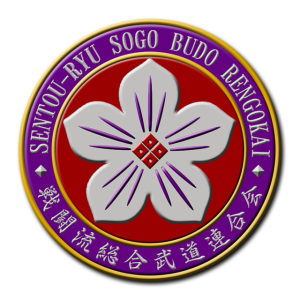Sentou-ryu Aikijujutsu
Sentou-ryu Aikijujutsu is a modern school with a traditional heart that teaches a complete martial art, among the hand-to-hand combat techniques with atemiwaza (kicks, strikes, elbow hits etc.), nagewaza (throws),shimewaza (strangles), kansetsuwaza (joint-locks), kyushowaza (pressure on vital points of the human body) and aikinojutsu (throws), the practitioner studies the use of all the ancient weapon of the Samurai, such as katana, yari, bo etc., techniques are then divided in way of performing them:
– idori : shite and uke working in knee
– hanza handachi : shite is kneeling, uke standing
– tachiai : both are standing
– ushirodori : uke attacks shite from the rear (standing).
Three areas that make up the Aikijujutsu:
Teaching is also divided in three levels of depth and ability:
Outline of Aikijujutsu Curriculum
All techniques are taught with self-defense applications in mind. The intension is to give students experience in the traditional aspects of Aikijujutsu with practical and contemporary viewpoints on self-defense.
Major development goals:
- Proper Defense and Conflict Avoidance Skills
- Self confidence
- Mental and Physical Fitness
- Self control
- Flexibility
- Courage
- Respect for yourself and others
- Perseverance
- Awareness of legal aspects of confrontational situations

Syllabus:
- Introduction to Aikijujutsu
- Dojo Etiquette
- Understanding of aspects of modern-day self-defense
- Development of basic skills
- Terminology
- Meditation
- Awareness
- Using senses
- Focus and Concentration
- Spirituality
- Kokyu (breathing)
- Ki (Energy) and Kiai
- Balance
- Physics of Ukemi
- Ma-ai (proper distance, space)
- Seiza (proper sitting positions)
- Kamae (stances)
- Taisabaki (Body shifting movements)
- Centralization
- Hands and arms as weapons
- Blocks
- Deflections
- Atemi and understanding of vital points
- Pressure points
- Feet and legs as weapons
- Concept of Aiki, Concept of Blending.
Sentou-ryu Aikijujutsu Techniques:
- Kihon waza (basic techniques)
- Te waza (hand techniques)
- Uke waza (receiving/blocking techniques/methods)
- Atemi waza (striking techniques)
- Geri waza (kicking techniques)
- Suwari waza (techniques in a sitting position)
- Nage waza (Throwing techniques)
- Sutemi waza (sacrifice techniques)
- Katame waza (grappling techniques)
- Kansetsu waza (joint manipulation techniques)
- Osae waza (pinning techniques)
- Shime waza (strangulation techniques)
- Randori (freestyle “all out” training against simultaneous multiple aggressors attack)
- Sukashi waza (techniques executed without allowing attacker to complete initial attack: grab, strike, etc.)
- Jiju waza (freestyle practice of techniques; sets of attacks and counters)
Goshin-no Waza: (self-defense methods)
- The process of defense
- Perception
- Evaluation-decision
- Reaction
- Understanding and utilizing principles of:
- Evasion
- Escape
- Redirection
- Neutralization
- Holds
- Control
- Immobilization
- Defense from the ground
- Defense
- Against strikes
- Against kicks
- Against grabs
- Against chokes
- Close quarters
- On the ground
- Weapons (Defense) – Divided into 4 groups
- Hanbo waza (against the club – baseball bat – stick)
- Tanto waza (against the knife)
- Tanji waza (against the gun)
- Kusari Fundo Waza – (against flexible weapons – chain, belt, or similar)
